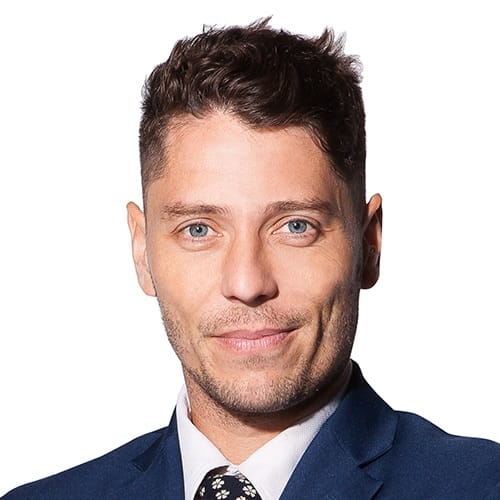IN FOCUS: Revitalised Boracay island in the Philippines faces next challenge - the return of mass tourism
Once called a “cesspool” by then-president Rodrigo Duterte, Boracay was closed for a period of 6 months in 2018 as part of efforts to rehabilitate the island. CNA visited recently to check out the changes as more travellers begin to make their way to the island once more.
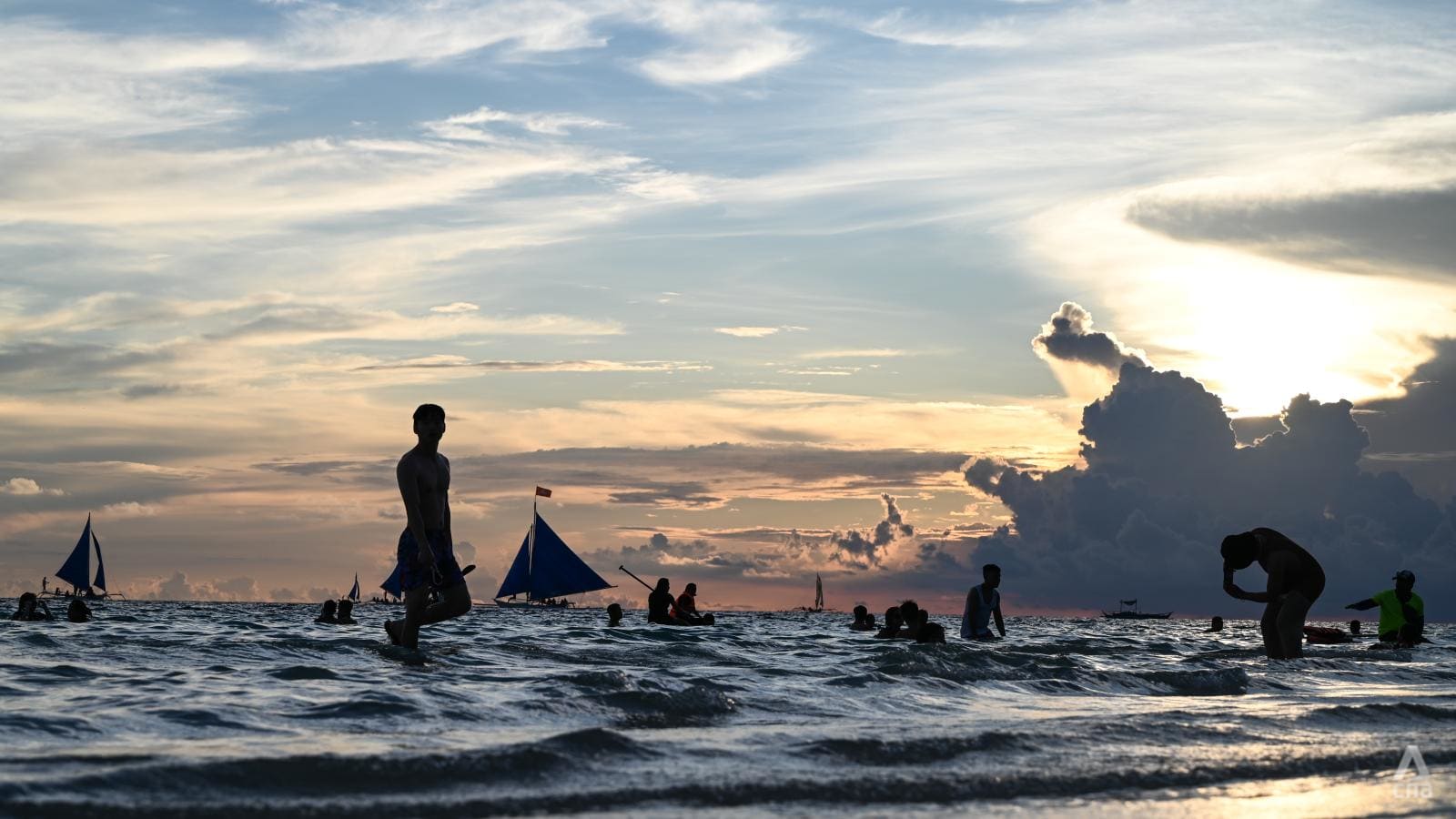
Boracay's sunset draws thousands to the beachfront on a daily basis. (Photo: CNA/Jack Board)
BORACAY, Philippines: The sunset in Boracay has a certain wonder to it. As the horizon starts to burn with colour, crowds are drawn out from their afternoon malaise to the shimmering foreshore in time for an inevitably spectacular show.
Streaks of lilac and magenta fill the dusk sky, casting new shades on a beach that blinds with the whiteness of its powder-like sand throughout the day. Children splash in the shallows and couples pose for photos, silhouetted by the fading light.
Further out, blue-sailed boats criss-cross the calm sea. These are the picture perfect moments that this tourist island has promised for decades.
For much of the past five years though, the number of visitors on Boracay has been greatly reduced. Locals have watched the sun set and rise on their own.
The Philippines’ holiday jewel has lurched from crisis to crisis. Its environment has undergone a radical revitalisation and its economy derailed by closures and evaporating tourist numbers.
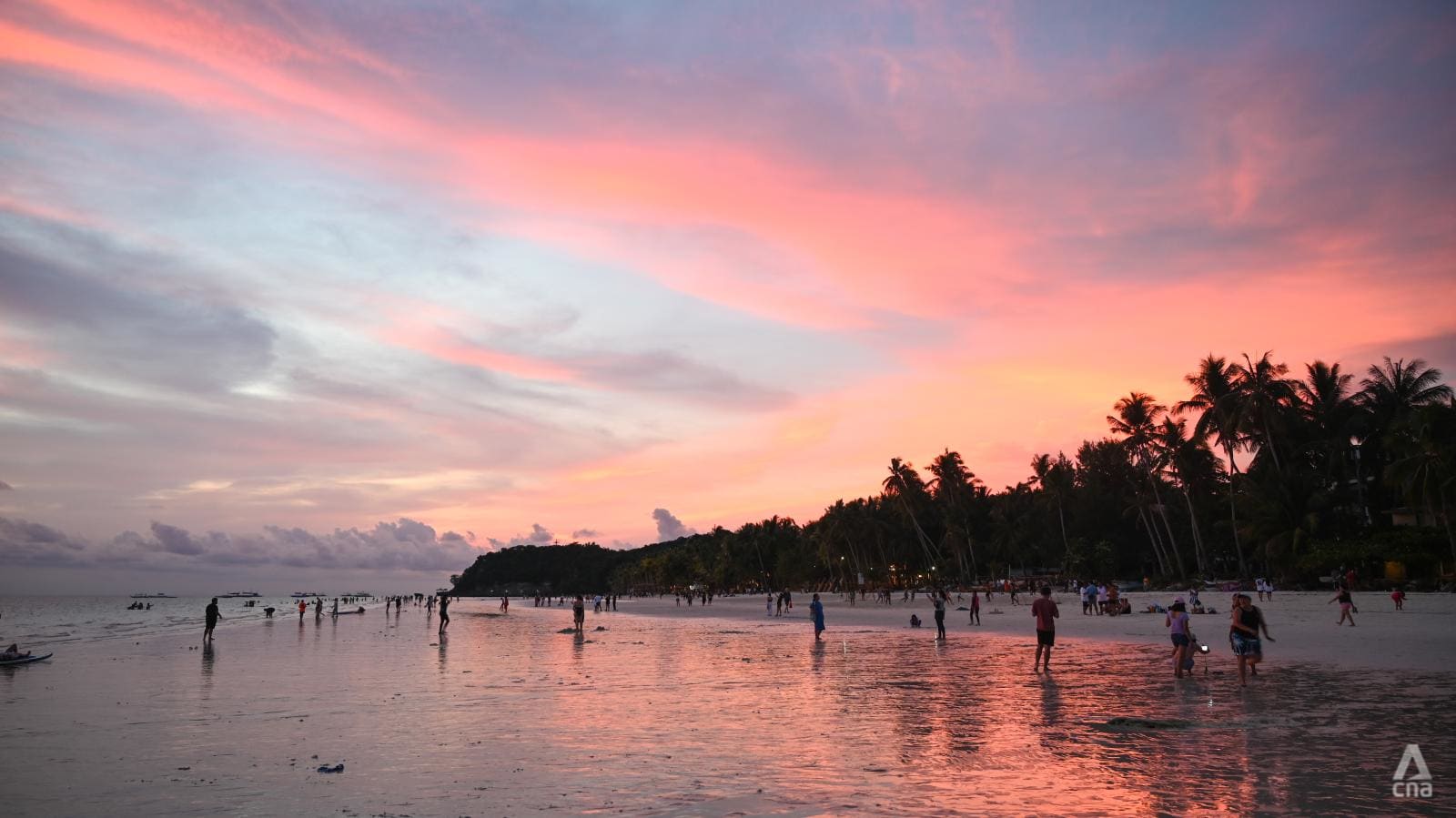
In 2018, then-president Rodrigo Duterte labelled the island a “cesspool”, a reaction to the island’s overcrowded beaches, wastewater being pumped into the sea, green tides of seaweed, congested roads and sprawling infrastructure.
He ordered the island abruptly closed for a period of six months to allow it to be rehabilitated. It was a controversial and radical option that shocked business operators, airlines and locals alike.
The tap that brought millions to Boracay every year was switched off.It was just over a year after the island re-opened for visitors when the COVID-19 pandemic struck another blow to tourism here.
Only in recent months do Boracay’s residents feel that the heady days are returning. And with that comes new challenges that have a familiar feel.
Amid a steady stream of tourists now heading to the island, some are worried that the strides made in the last few years could be lost in the pursuit of economic revitalisation.
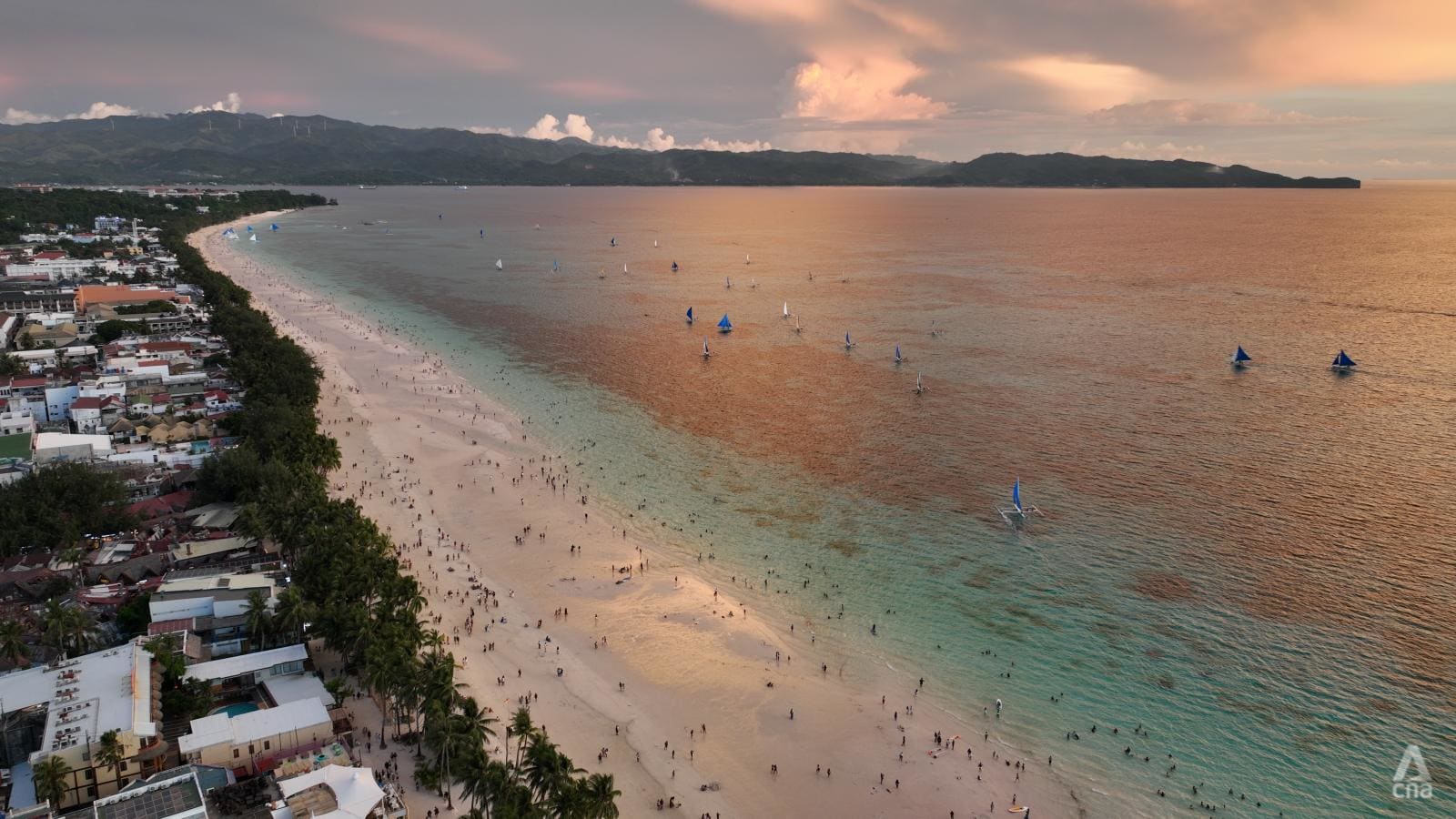
GOODBYE TO DIRTY REPUTATIONS
The positive changes to Boracay since the shutdown of 2018 are clear to see. The island’s iconic White Beach is less bustling than it was before - gone are the elaborate commercial sandcastles, the fire-twirling shows and dining setups on the sand.
Stricter restrictions apply along the beachfront, on food and drink consumption, drone flying and soliciting. The buzz of engines from watersports and pump boats is gone and the revelrous party atmosphere has dissipated.
The main road thoroughfare that acts as an artery for all traffic on the island has been widened and tidied. Buildings too close to the road were demolished or forced to be modified. Electric trikes for commuters and tourists have replaced their heavy fume-producing predecessors.
Development has further reached Bulabog Beach on the other side of Boracay, where for years wastewater had been pumped out to sea. Now, a beach path gives access to a range of small hotels and restaurants.
Business owner Nenette Aguirre-Graf hopes to make Bulabog home to the region’s best windsurfing, now that the beach’s dirty reputation is in the past.
“They really cleaned it up. People are now back in the water when before, as much as possible, we had to avoid touching the water because we knew it's not healthy for us,” she said.
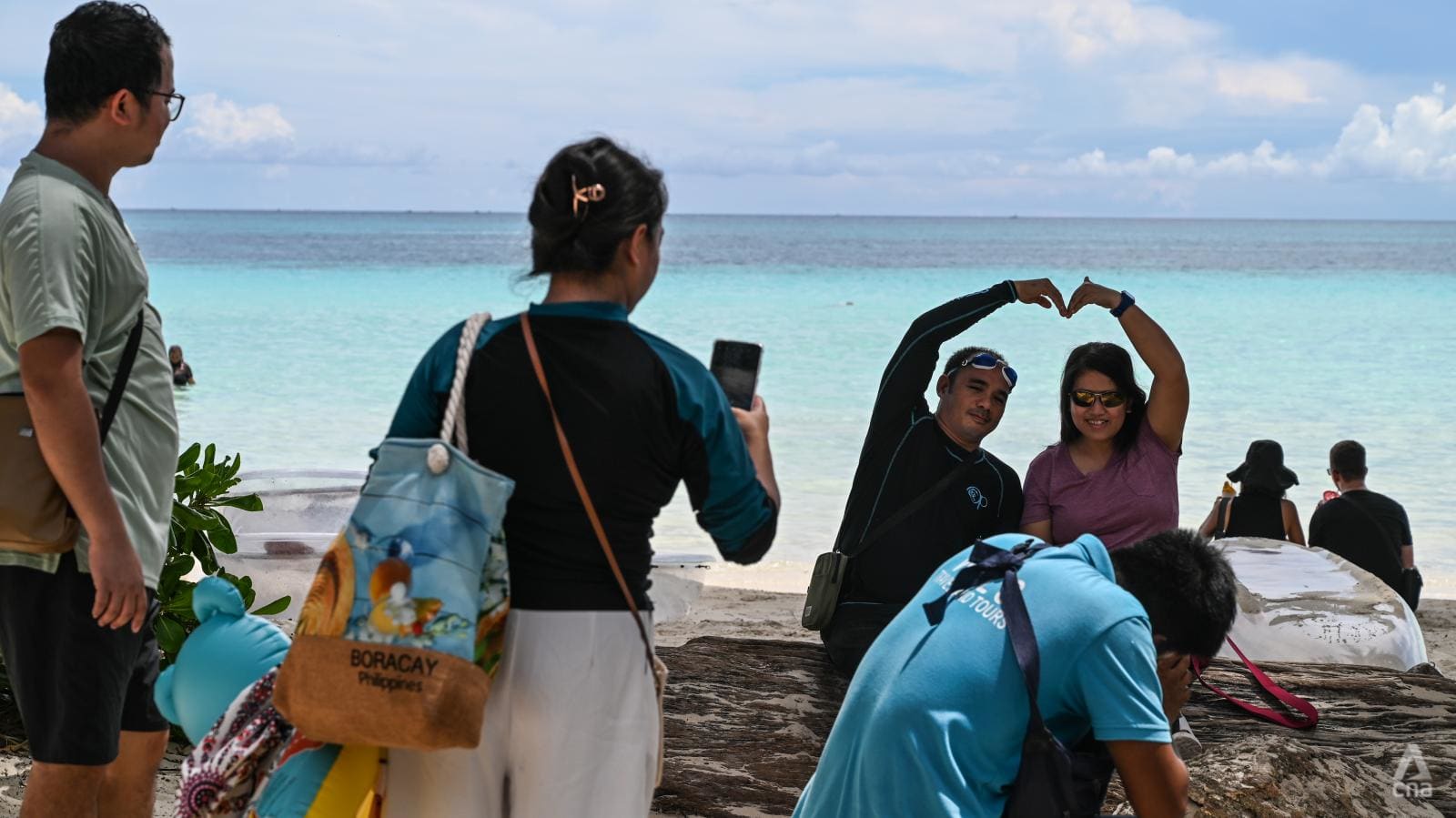
But mass tourism ideals still rule on Boracay. While many businesses have not returned post-shutdown and pandemic, and their skeletal ruins dot the coastline, close to every inch of prime coastal land is built upon.
Visitors can step from a Starbucks directly onto the white sand, and fast food giants McDonald’s and Jollibee are close by. Boracay is an island escape with the conveniences of urban life always within close grasp.
In the evenings, loud music still blasts from beach clubs and - the seemingly much more popular - local live music performers singing pop covers to holidayers.
This is still a neon light rather than a starry sky destination. Overwhelmingly, the clientele these days are Filipinos; the local tourism market has exploded in Boracay post-pandemic.
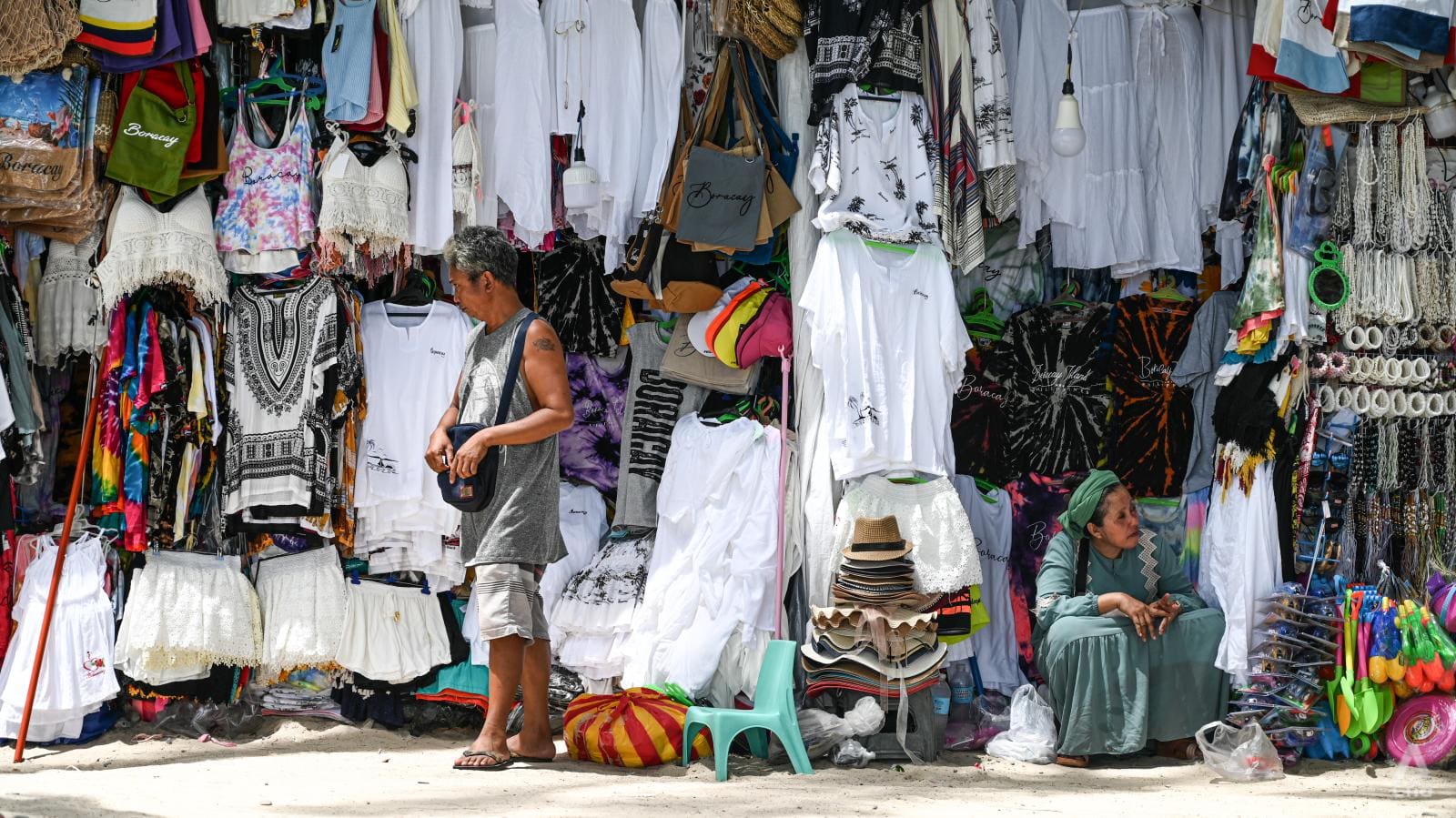
For the year up to Jun 17, more than one million tourists were recorded to have visited Boracay, according to the Malay-Boracay Tourism Office. More than 78 per cent of them were locals, in contrast to the years before the pandemic and shutdown when Chinese and South Korean arrivals alone made up about 40 per cent of all visitors.
These critical markets have yet to bounce back. The first charter flight for Chinese tour groups arrived in April, but visa processing hurdles remain at present for individual travellers.
A daily cap on arrivals, enforced by the national government as part of the island’s sustainable operations, remains in place. That means only 6,405 tourists are permitted to enter Boracay each day, based on a total determined carrying capacity of 19,215 tourists at a single time.
But after the oversight of the island was handed back to local authorities in June last year, there is growing impatience to let more people in.
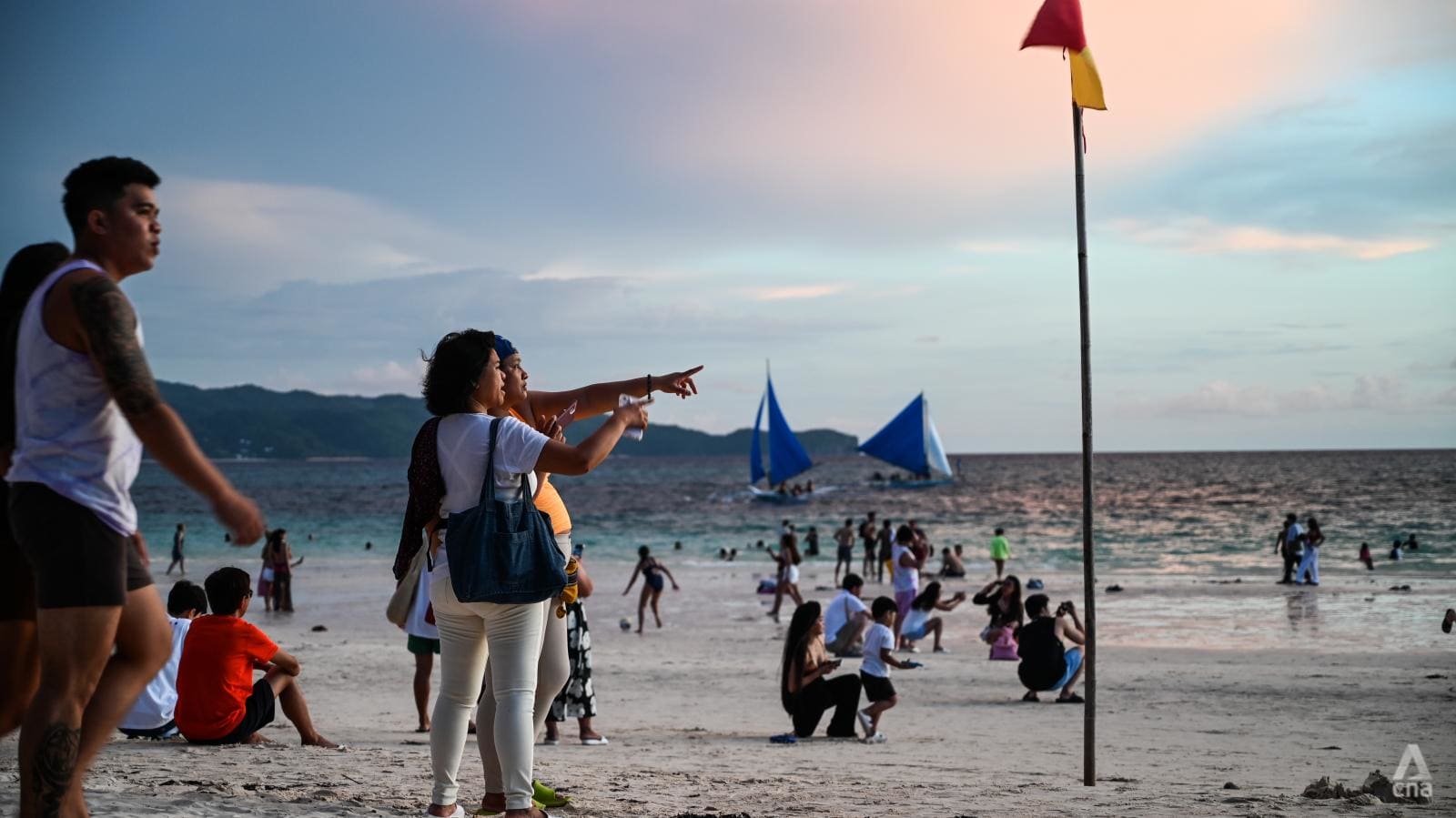
ROOM TO GROW
Boracay Mayor Frolibar Bautista is nothing but bullish about the island’s ability to welcome more guests.
He predicts that more than 2 million visitors will come this calendar year, on par with arrival numbers in 2017, when it was suffering from widespread environmental issues.
He told CNA that Boracay could handle a massive increase in visitors, given the improvements made since the shutdown, the appetite of local businesses and the excess number of hotel rooms available.
“If you maintain that figure, how can some resorts survive? No, it's not enough. That's why we have some proposals and there's some changes that we're still waiting to be approved on increasing the carrying capacity,” Bautista said.
Already, the mandated daily arrivals cap was exceeded on several days during the busy Holy Week holiday period in the Philippines in April. Municipal data shows that 12,266 tourists visited Boracay on Apr 14 alone, nearly double the limit.
That resulted in the local leadership being reprimanded by national government officials but Bautista was not concerned. He opined that the publicity was helpful to raise public curiosity about Boracay’s resurgent popularity.
“I think it was a good promotion for Boracay,” he said.
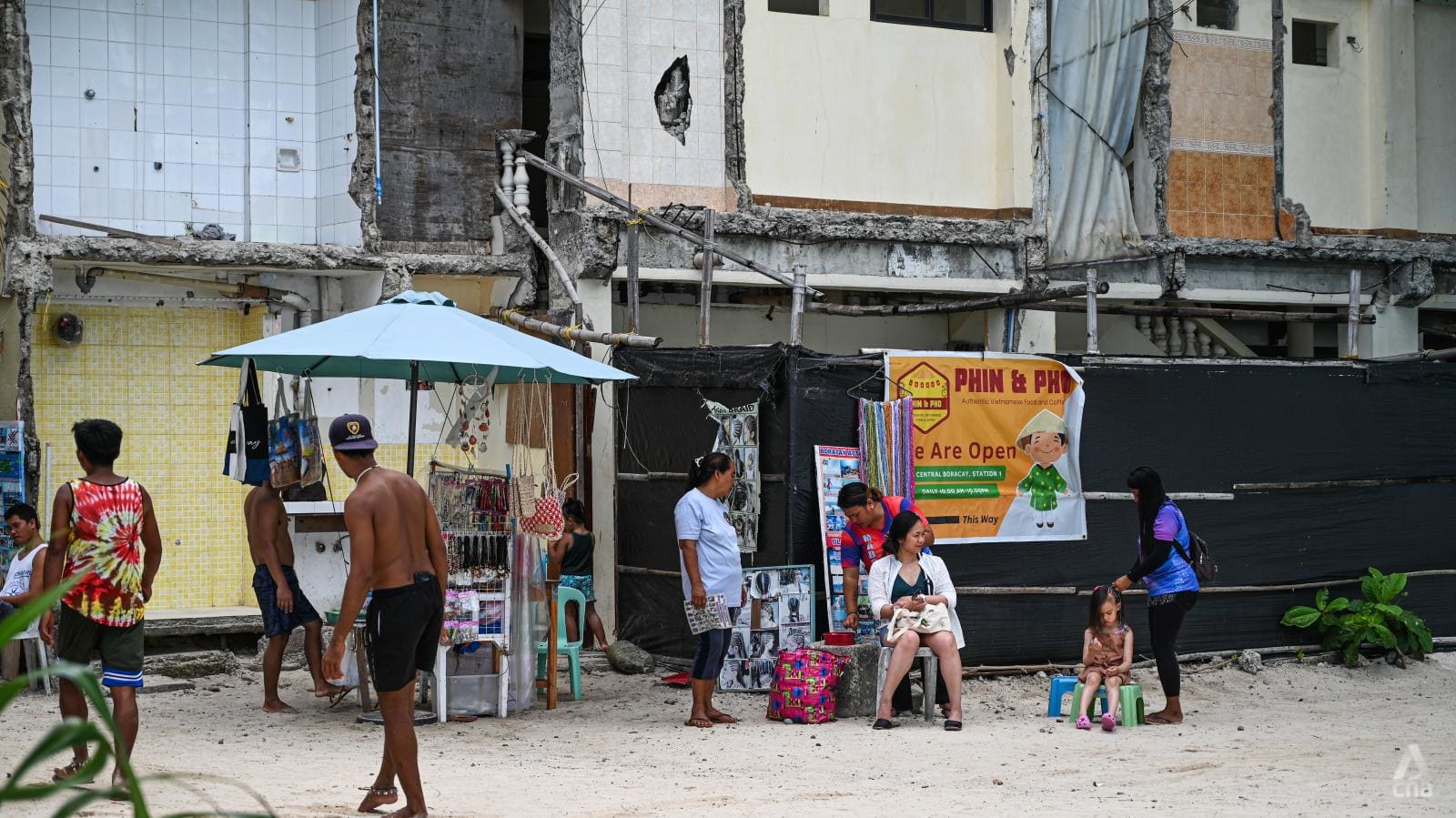
The decision to lift the cap on daily tourist arrivals is pending on a study by the Department of Environment and Natural Resources (DENR), which previously led the national taskforce on Boracay. Those findings could determine whether the island is fit and was meant to be delivered a year ago when the Duterte administration ended its term.
Local, municipal and national branches of DENR did not agree to multiple interview requests by CNA.
Business operators on the island are anxiously awaiting a further uplift. Aaron Tan, a director of Boracay Adventures Travel N Tours, said economic losses have been severe over the past five years. Years of work, especially establishing overseas networks, came crumbling.
“There have been huge impacts for the tourism industry in Boracay. A lot of people lost their jobs, businesses lost money, but at the same time, of course, there is development of infrastructure and rehabilitation,” the Malaysian expatriate said.
“A loss is a loss. I cannot do anything about it anymore. But looking forward, Boracay is becoming better and better. We love Boracay and we want it to be more eco friendly and environmentally sustainable.”
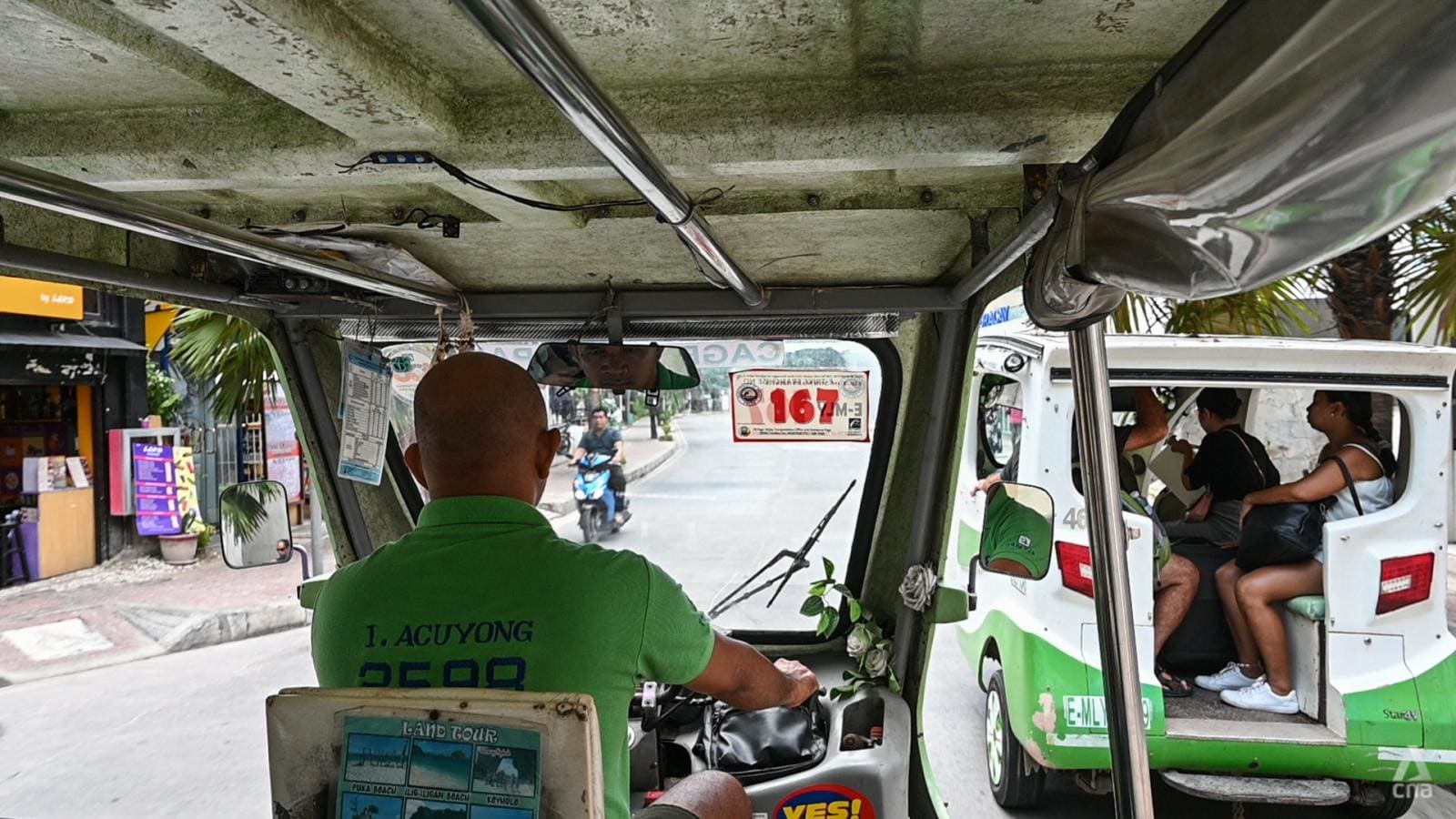
The absence of foreign tourists, especially from China and South Korea, continues to hurt, Tan said. And even if they wanted to come, he argued, the arrival limit is already being regularly pressed by the swollen domestic visitors.
“It's not for me, it's for the entire island if these two majority tourist populations come back. The restrictions should be lifted. They should allow a lot more tourists to come into Boracay, monthly,” he said.
At the same time, Tan and his business counterparts are pushing for the return of more direct flights from Southeast Asia, especially Singapore and Malaysia, after those routes were put on ice after the shutdown and are yet to re-commence.
For locals operating smaller businesses on the beach, like hair braider Hazel Rodriguez, the return of the more lucrative East Asian travellers cannot come soon enough.
“Maybe now that the island has improved, we hope for our businesses to boom the same as before. Because right now, after the island reopened and after the pandemic, our business hasn't reached 100 per cent yet. Only about 50 to 60 per cent of our business has returned,” she said.
“Before, most of the people here consisted of Chinese and other foreigners and that's what made braiders like us boom, because they are the ones who love these things.”
Jin Chee Khow is not waiting to make his move. The Malaysian restaurant operator has just opened his latest project, Kombu Japanese Bistro and is feeling confident that Boracay is a savvy option to invest in.
“Now is really good timing. Even though now it's only mostly local guests, we have good news from all around the world that the tourists will be coming back. So, we are ready and waiting for them,” he said.
Still, with the roads and beaches getting busier by the month, not everyone is convinced that the mass-tourism model is right for Boracay.

TIME TO TAKE PAUSE
Just as tourists have been drawn en masse to the white sands over the years, entrepreneurs, street vendors, gambling personalities and resort tycoons have ridden the same winds blowing into Boracay, chasing a slice of the earnings.
Aguirre-Graf, the former head of the Boracay Foundation - a non-profit charged with “sustaining the island's environmental, business and social needs” - and an officer of the local hotel association, said that the island’s fabric will only be further damaged if the relentless pursuit of profit is allowed to run.
“We cannot only think about profit. We should also think about the future, how the island will survive if we keep on putting more buildings and bringing more people,” she said.
“The management of the garbage and preservation of our flora and fauna on the island is very important because there has to be balance.
“If we have to open it to mass tourism, again, we have to really impose strict regulations so that those things that happened before will not happen again.
“I'm sure there will be a way but we just have to install all the necessary infrastructure in order to sustain growth in Boracay. But sometimes you doubt your governments, you know,” she said.
Boracay faces a litany of challenges, including erosion on its White Beach, driven by rising sea levels and climate change, hundreds of sinkholes throughout the island caused by soil erosion and sustained leaking of water pipes and sewerage lines and the overall pursuit of sustainable and equitable development.
At the same time, the building of new hotels, resorts and restaurants is rapidly underway.
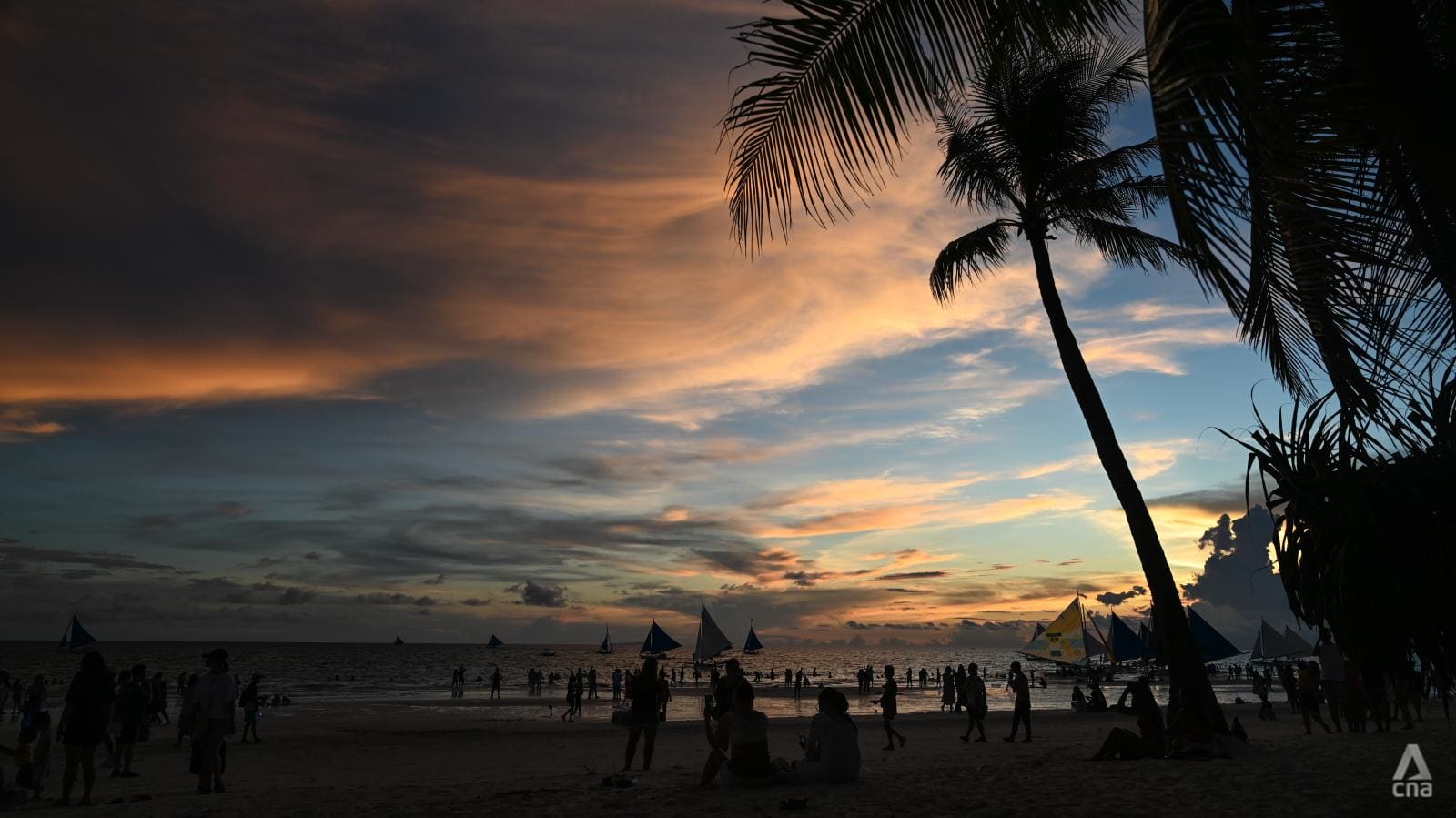
Architect and urban planner Felino Palafox Jr was involved in making a series of recommendations to the government to improve Boracay around the time of its shutdown and said that what has been done so far is only a work in progress that will take decades to complete.
Clean energy supply, security and monitoring, elevating the construction of buildings up above floodlines and developing nearby islands and mainland to lessen the load on Boracay are all priorities that remain outstanding, he said.
And before the gates open to more tourists, there needs to be a clear picture of whether the interventions and improvements have actually worked, according to Maria Ana Pulido, the national president of the Philippine Institute of Environmental Planners.
“We really need to come up with more intensified monitoring and evaluation mechanisms to reassess periodically on the island. We have yet to see a report that shows the true picture of the carrying capacity of Boracay,” she said.
“I hope the government will be able to pay attention to this and to measure all the interventions that they have undertaken so far.”
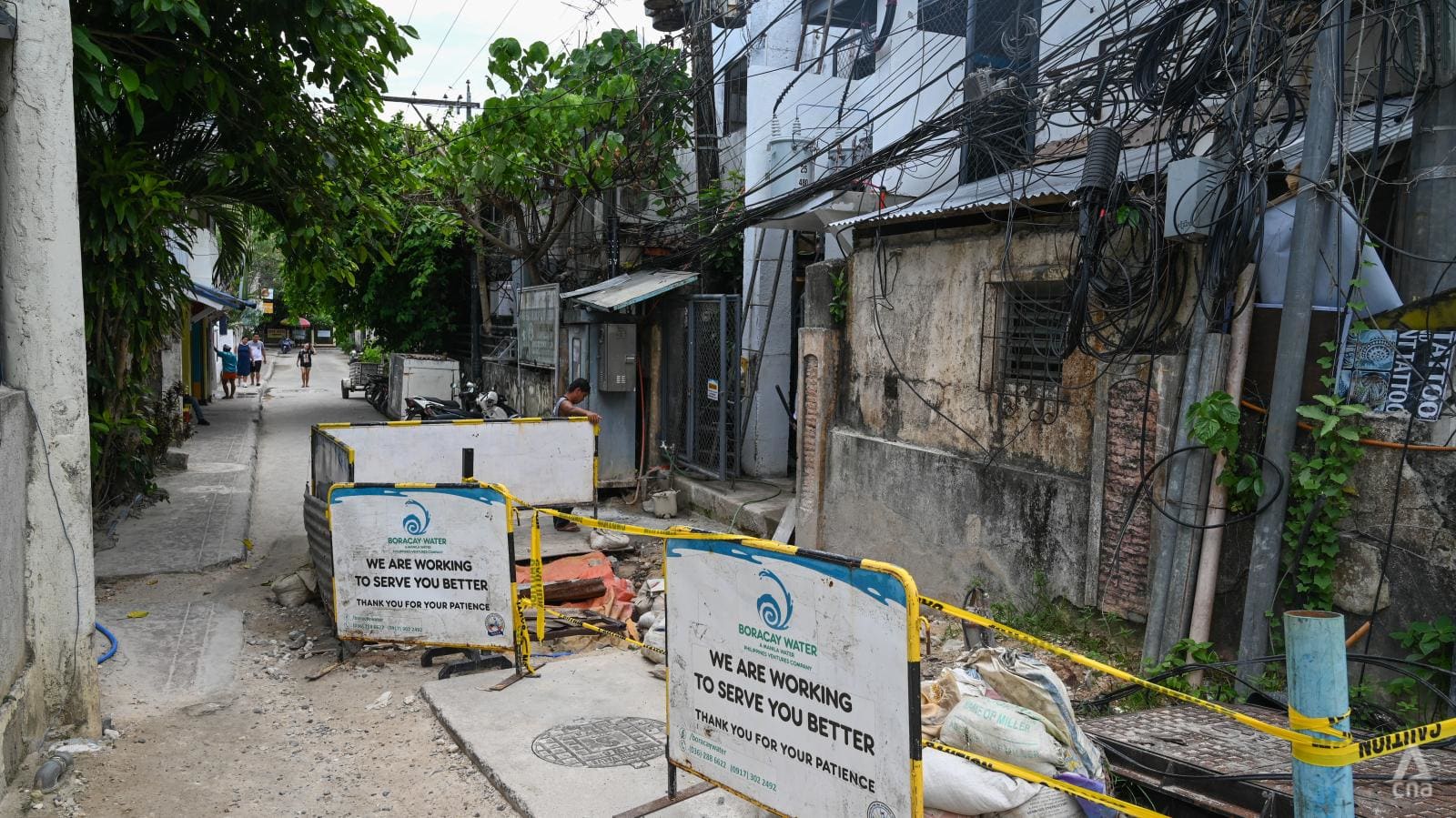
AMID DEVELOPMENT, INEQUALITY IS RAMPANT
Perhaps the most forgotten stakeholder in deciding Boracay’s future are the people who were there first.
The name Boracay comes from two words in the indigenous Inati language, so it is said. “Bora”, meaning bubble, and “bukay”, meaning sand.
The Ati, the island’s first people, hold dear to their history and culture, but have watched inequalities grow as a paradise was carved into private slots of land in the name of wealth and development.
Ati Village on the eastern coast of Boracay’s narrow flank could not be more removed from the resorts of the west. The community here lives on the poverty line, fishing, collecting shells and growing crops on the limited slivers of territory it has been allowed to live on.
“Ati are very simple. We once roamed the island of Boracay without anyone telling us what to do,” said Delsa Justo, tribal leader for the Boracay Ati Tribal Organization (BATO).
“I admit there is sadness now. Why? The places where I used to sit, the places where I frequented, are no longer the same.”
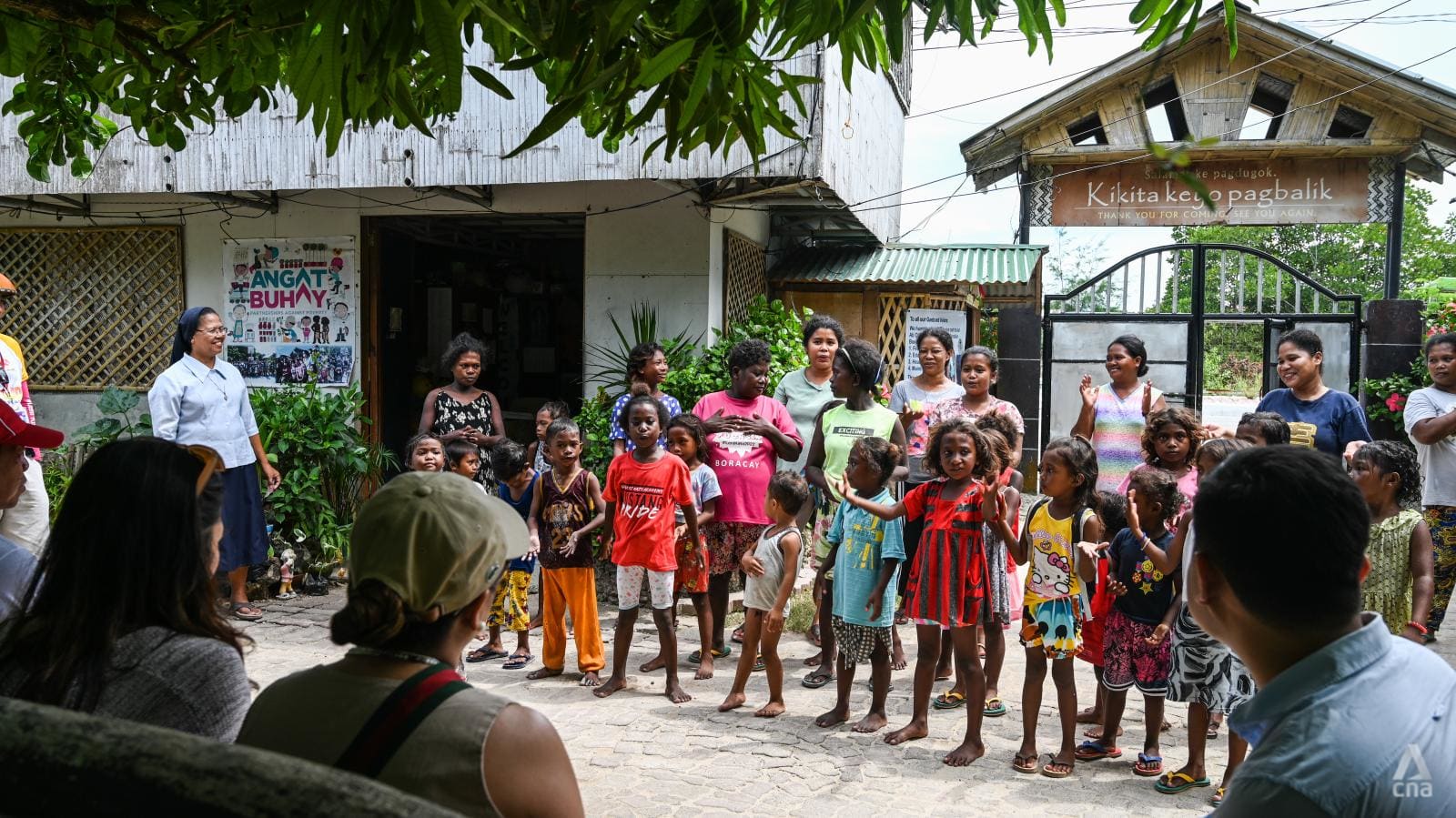
The distribution of lands through agrarian reform was an important stated component of president Duterte’s cleanup direction. For the Ati, it was an opportunity to step out of the shadows.
“The rehabilitation paved the way for us to become more visible to president Duterte because he saw to it. That’s when we said to ourselves that it was a good project because it made a lot of things here in Boracay visible,” said Maria Tamboon, BATO’s leader for advocacy.
And while they were initially awarded parcels of land during the rehabilitation, they now find themselves mired in legal battles. The land they were granted for agricultural use has since been deemed unsuitable for that purpose, following a petition from property developers.
The community - long discriminated against - is fighting on. But a sense of resignation hangs over some of their elders.
“It is a struggle, but we can’t really go against the changes because we live here. That’s why even if there are difficulties, we fall on our knees,” Justo said.
“We hope the environment will not be cut. We hope it will not be destroyed to build things. We hope for the trees to continue to thrive. A beautiful mountain even if it's not very big, we hope it prospers.”
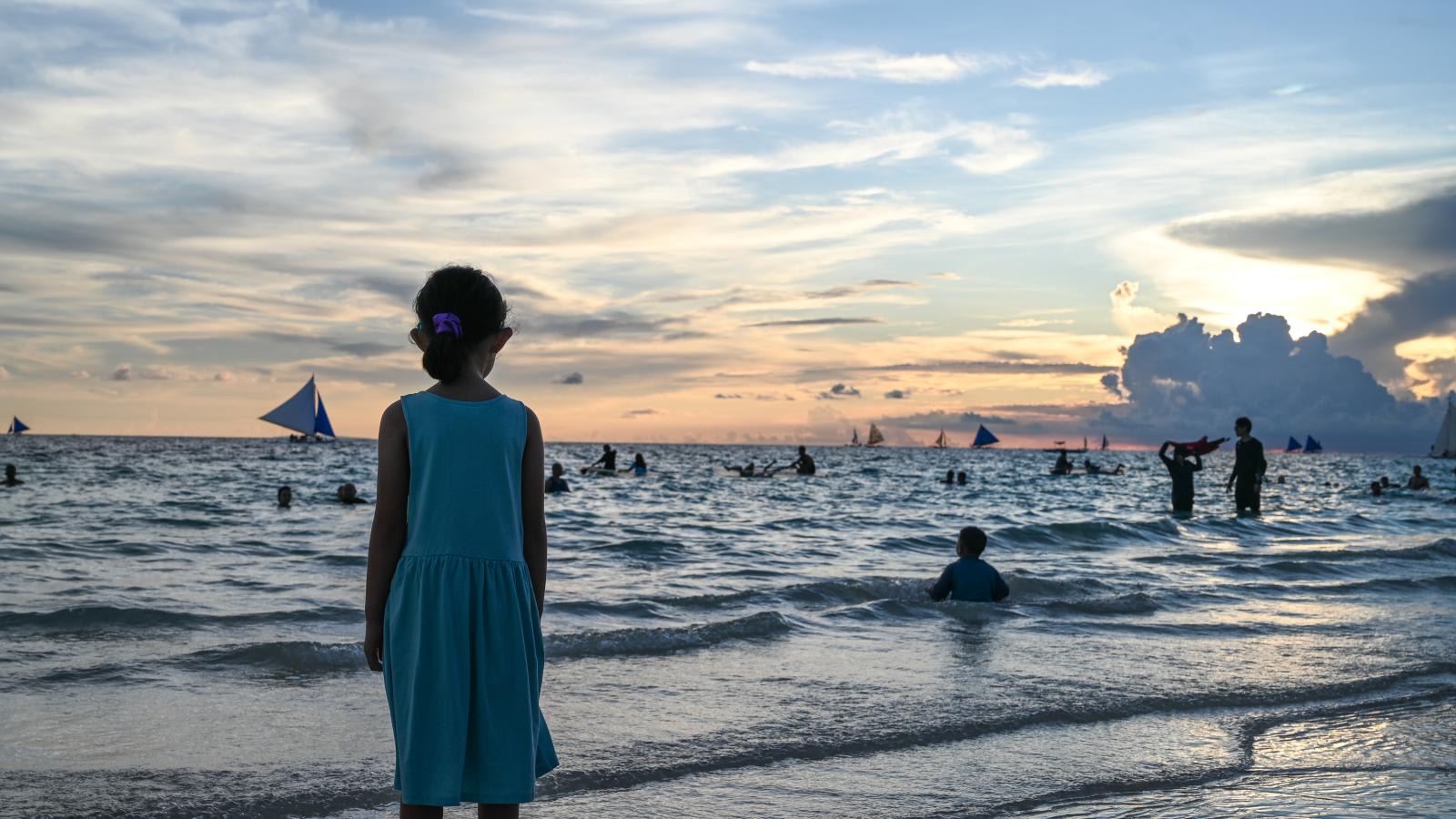
Just a few hundred metres from where Ati children play in the white sand, Aguirre-Graf walked along the calm coastline in front of her windsurfing business.
There is not much of a sunset over here. The crowds would have congregated on the west side of the island by now.
This is a feel of the old Boracay, she said, where the water is clear, time seems to pass slowly and possibilities feel bright after the “darkness” of recent times.
Regardless of what happens in the years to come, Aguirre-Graf wants this part of the island to remain.
“Sometimes your soul needs this, you know? It’s something local where you can put your feet in the sand,” she said.
“And it makes you feel better that we still have this.”
Additional reporting by Aiah Fernandez.







